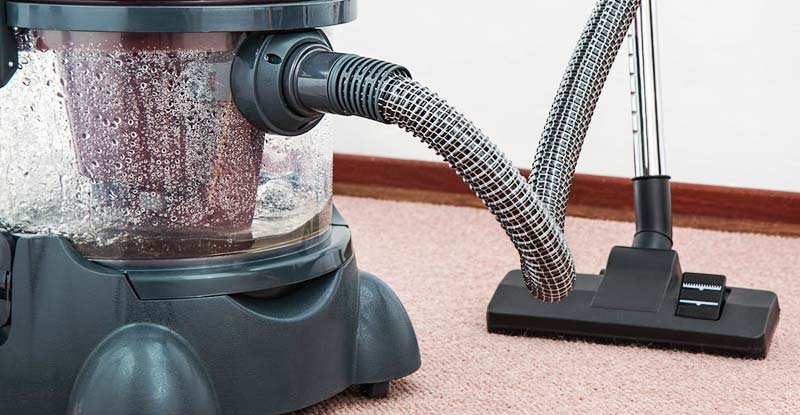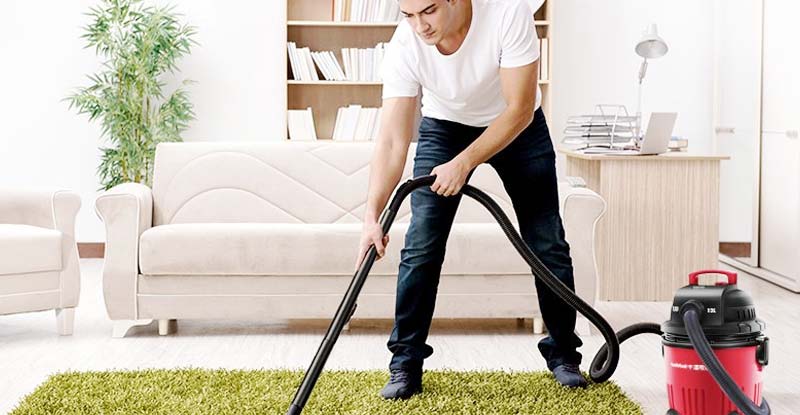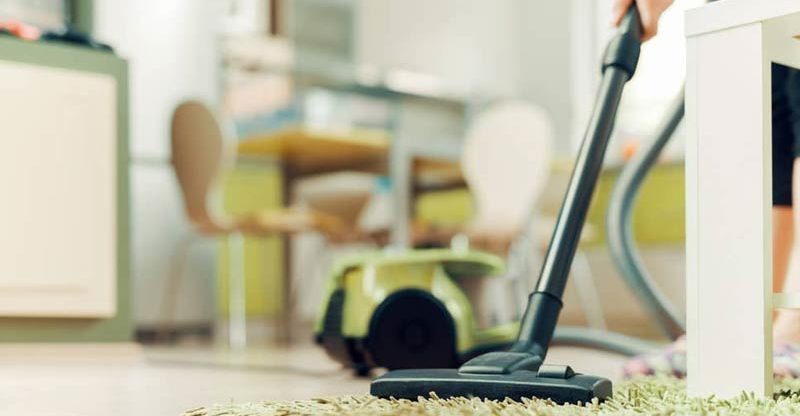A Complete Guide for All Types of Vacuum Cleaners
Vacuum cleaners have been around for more than a century. They became widespread in the last 60 years or so, and are undergoing constant evolution. There are different configurations available on the market, aimed at different kinds of users. To find the best vacuum cleaner for your needs, you have to learn about the all types of vacuum cleaners on offer.
All Types of Vacuum Cleaners

You may be aware, two, maybe three different kinds of vacuum cleaners. But this is an advanced field, with a high degree of specialization. You can find vacuum cleaner models designed to handle a wide variety of scenarios and usage requirements. Check out this exhaustive list of nearly 20 different vacuum cleaner types to learn more!
1. Upright
These are the most common and familiar type, often used in domestic cleaning. The design involves a cleaning head, base, a handle, and a bag attached to the base. There are two sub-types in uprights: dirty air/direct fan, and clean air/fan bypass. The difference between the two lies in the size and positioning of the fan.
2. Canister
This is another very popular home cleaning option. They are very compact, with the dust collector and motor in a single module. The cleaning involves a hose and different attachments.
You can find bagless variants in this class of vacuum cleaners. Canisters are more versatile than uprights, as they can reach tight spots with ease.
3. Stick
The name comes from the design and appearance of this type of cleaner. The handle is very long and in the form of a stick in these cleaners. They are ideal for bare floors and light carpeting.
They often lack the suction power to handle more challenging surfaces. They are usually very light and affordable.
4. Handheld
As the name suggests, these are highly mobile designs wielded in your hands. They are very popular for use is very compact areas like the interiors of vehicles. Handheld models are available in corded and cordless configurations.
These are incredibly diverse and affordable vacuum cleaner models. There is high variability in price.
5. Drum Vacuum Cleaners
These are the pro-grade industrial vacuum cleaners. They are an advanced design of the canister type, with a large vertically positioned drum. This drum is usually on its stand or set of wheels for easy movement.
These are high capacity vacuum cleaners able to carry a lot of dust. Smaller electric versions are used in garages and workshops.

6. Wet/dry vacuum cleaners
This is another subset of the drum vacuum cleaner design, and by extension, the canister design. The only main difference is that this particular model can handle liquids. They are safe for use both indoors and outdoors. Some even can reverse the airflow.
7. Pneumatic Vacuum Cleaner
Again, this is a specialized variant of the wet/dry vacuum cleaner design. Instead of electric supply, these vacuums use an air compressor. The main advantage of this design is the expanded capacity.
They can handle both liquids and dry dirt. The capacity of these industrial/commercial variants is among the highest.
8. Robotic Vacuums
This is the child of the age of automation and smart devices. They are compact devices that are highly autonomous. Robot vacuum cleaners will constantly be on the move inside the home, collecting dust and debris.
They can find their way through cluttered spaces. The programming even gives them the ability to go for automatic recharge when the battery is low.
9. Cyclonic Vacuums
This is a unique vacuum cleaner design that doesn't use any filters to separate the dirt. They use a process called cyclonic separation. These vacuum cleaners create a vortex inside.
When dust enters, it hits this vortex. Centrifugal forces and gravity act on the dust particles. This results in the separation of various sized particles.
10. Central Vacuum Cleaners
The central vacuum is an immobile installation that is placed in a discreet location somewhere in the home, like the basement. The device uses a permanent network of hoses to deliver suction power to various sections of the house.
To use the system, you can attach hoses to these outlets. All the dust collected is taken to the central location. You don't have to carry the vacuum cleaner unit around the house.
11. Constellation
This is a radical vacuum design that has been tried several times in the market. It is a hovercraft model that floats in the air on its exhaust. The first design was released all the way back in the 1960s.
The design had no wheels. But it failed to find traction in the market and was discontinued. In 2006, it made a brief comeback but was pulled off the market three years later.
12. Commercial Vacuum Cleaners
This a pretty diverse family of devices. As the name suggests, they are used in various service sectors by professional cleaners. You will find them in offices, schools, hospitals, restaurants, and other public spaces like shopping malls.
These designs have superior suction power and durability. They are very efficient cleaners.
13. Cordless Vacuum Cleaners
These vacuum cleaners are not restricted by the positioning and availability of power outlets in a room. They use inbuilt batteries to provide the charge on the go. The batteries are high capacity rechargeable versions.
They can be easily charged up in between cleaning sessions. These models are best suited for bare floors and thinner carpets. They are optimised for mobility, and lightweight.
14. Bagless Vacuum Cleaners
There is no difference in suction power and cleaning capacity between bagless and regular vacuum cleaners. The only difference is that you don't have to buy or deal with bags all the time. Instead, bagless vacuums use cyclonic technology to draw dust to a dust cup. These models use filters that need regular maintenance.
15. Backpack Cleaners
These cleaners are highly mobile varients primarily used in industrial and large commercial establishments. But they are also getting some popularity for residential use these days. They are lightweight and highly portable, worn on the back of the user thanks to a system of straps. Backpacks are easy to store and retrieve for quick cleanup sessions.
16. Car Wash Vacuum Cleaners
You will find these at gas stations and car wash establishments. They are meant for use by customers at these locations. These cleaners use industrial strength suction on automobile interiors. Many have payment facility built into the system for a quick pay-and -use experience.
17. HEPA Vacuum Cleaners :
These are perfect for individuals with allergies and asthma. They are residential units with high-quality HEPA filters inside. These vacuum cleaners can trap minuscule particles down to 0.3 microns in size. The filters are rated to control 99.97 percent of such particles. This is a great option for households with allergic individuals, especially kids.
18. Ash Vacuum Cleaners :
You cannot use most residential and commercial vacuums on ash and cinders found in fireplaces and kilns. Ash vacuum cleaners were designed to fill that void. They are made from flame retardant materials. The fine ash particles cannot damage the specially designed motor inside these cleaners.
What Type Of Vacuum Do You Need?
As you can see, there is a bewildering array of diversity and specialization in the vacuum cleaner market. Buying a vacuum is not as simple as picking the first model you see in the market. You have to do your homework and figure the features that you need for your home or commercial cleaning environment.
For the consumer, the problem of plenty is actually a luxury. Having numerous types of the same product, you may feel the selection process becoming a hassle or a chore. But with just minimal research, you can easily find the best vacuum cleaner for your home or business. Match the design to your requirements to get the best vacuum cleaning experience possible.





